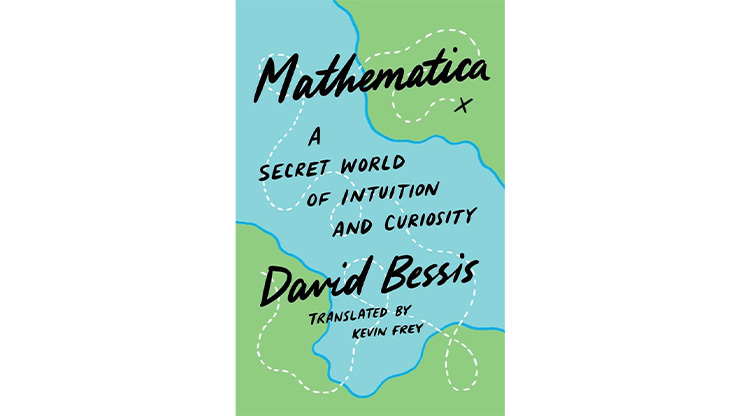Poker Players Versus Bureaucrats: A Manichean View of Humanity
On the Edge: The Art of Risking Everything. By Nate Silver. Penguin Press, New York, NY, August 2024. 576 pages, $35.00.

Nate Silver’s first book, The Signal and the Noise: Why So Many Predictions Fail – But Some Don’t was published in 2012 and served as a popular account of the art of prediction — the techniques, challenges, successes, and limitations of attempting to accurately predict the future in a variety of domains, from politics and sports to earthquakes, epidemics, economics, and climate change [1, 3]. Gary Marcus and I reviewed the text in The New Yorker soon after it was published [2]. We gently chastised Silver for overstating the importance of Bayesian statistics and downplaying its limitations, but the book’s overall merit was unquestionable. In fact, Marcus and I wrote that “For any lay reader wanting to know more about the statistics and the art of prediction, the book should be essential reading.”
Now, 12 years later, Silver has published his second book, On the Edge: The Art of Risking Everything. The text centers on the estimation, management, and acceptance of risk in a number of different contexts: professional poker, betting on team sports, founding and investing in Silicon Valley startups, and the existential risks that are associated with artificial intelligence (AI). Introductory information about the central tenets and key scenarios of game theory is interspersed throughout. There are also roughly 60 pages on the subject of convicted financial criminal Sam Bankman-Fried, which serve as a warning of what can happen to someone whose view of risk is pathologically skewed. Finally, Silver includes a long discussion about a number of ethical theories—utilitarianism, effective altruism, rationalism, etc.—and their implications for potential risks and benefits in conjunction with the development of AI.
On the Edge exhibits some of the same strengths as The Signal and the Noise. Silver’s narratives are entertaining, and his exposition of complex technical concepts like game theory and ChatGPT are impressively clear and readable. On the Edge is also carefully researched and documented; Silver conducted approximately 100 interviews and provides 40 pages of endnotes and a 25-page glossary of technical terms. He is comparatively open-minded and certainly much less dogmatic than many of the people that he interviewed. His discussion about ethical theories is reasonable, humane, and not at all doctrinaire, and he is consistently intelligent and often sharply insightful.
The most enjoyable part of the book for me—and likely for the author as well—was the first section, which focuses on poker. Silver was a professional poker player before he turned to political prediction, and he seems happiest and most comfortable in this setting. As an avid fan and a fine raconteur, he gladly regales the reader with blow-by-blow descriptions of famous and dramatic poker hands: the play of the cards, the placing of bets, the telltale hesitations or glances (or were those just deceitful acts?), the odds for player \(X\) if player \(Y\) is bluffing, and their odds if \(Y\) is not. These descriptions are fun to read, up to a point. It is almost always entertaining to witness a chatty enthusiast excitedly getting into the weeds of their avocation — a Shakespeare scholar describing the differences between the First Folio and First Quarto Hamlet, or a Civil War buff narrating an hour-by-hour account of the Battle of Gettysburg.
Overall, however, On the Edge is not nearly as good as The Signal and the Noise. Silver was on top of the world in 2012, coming off of a long series of spectacularly accurate predictions of sports and elections, and his point of view in The Signal and the Noise was accordingly genial and generous in spirit. His star has since fallen significantly; he appears to resent his circumstances, placing blame on the media and the political class. As a result, the tone of On the Edge is often hostile and defensive.
Much more importantly, the central pillar of the text is a dangerously false view of the world. Silver divides society into “the River” (the good guys) versus “the Village” (the bad guys). The inhabitants of the River, called “Riverians,” are poker players and other gamblers, Silicon Valley startup founders, venture capitalists (VCs), and—to some degree—people who are involved in the effective altruism and rationalism movements. The Village is what used to be called “the Establishment:” the government, major media, universities, and so on. Silver describes Riverians as analytic, abstract, and “decoupling” (i.e., avoidant of the conflation of separate issues) in their thinking, and competitive, critical, independently minded, and risk tolerant in their personalities. On the other hand, Villagers are conformist, rigid, herd minded, and risk averse. Silver likes and admires his fellow Riverians, sometimes to the point of hero worship, and expresses little but contempt for Villagers. In Silver’s telling, almost all human progress and wellbeing is due to the River; the Village rarely does anything but get in its way. This dichotomy forms the framework for the entire book, as Silver presents it at length in the first chapter and returns to it constantly. Even the glossary is titled “How to Speak Riverian.”
This characterization is all nonsense. First, dividing humanity into gamblers versus bureaucrats is absurd; most people are neither, including those who make important contributions to society (no matter how they are defined). Second, Silver’s characterization of the Villagers is cartoonish. He understands the Riverians; describes them vividly; and offers sharp insights about their strengths, virtues, weaknesses, and flaws. However, Silver does not understand the Villagers and shows no interest in doing so; he interviewed very few individuals who fit that category and has nothing of value to say about them. On the Edge would have been considerably better if he had omitted the Village altogether.
It did occur to Silver that a book about risk should address other kinds of risk beyond the potential loss of money due to a bet or an investment. He therefore includes a chapter that features a number of people who risked life, limb, or career: astronaut Kathryn Sullivan, football player David Anderson, U.S. Army lieutenant general H.R. McMaster, mountain climber Victor Vescovo, and biochemist and Nobel Prize laureate Katalin Karikó. Silver interviewed each of these individuals and argues that they are all basically Riverians, but his heart does not seem to be in it. He realizes that they are admirable, but they do not actually interest him. For instance, Karikó grew up in a small village in Hungary in a house without running water; left Hungary with her husband, two-year-old daughter, and $900 stuffed in a teddy bear; lived in her lab office as an undocumented alien under threat of exposure; and, together with Drew Weissman, invented mRNA vaccines and thus very likely contributed more to human welfare than all of Silver’s other interviewees combined. However, Silver devotes less than two pages to her — much fewer than many of the poker players and VCs that he enthusiastically describes.
Additionally, On the Edge does not mention any other forms of courage, such as the bravery of journalists and political activists who were murdered, exiled, or driven into hiding for their investigations of corrupt governments, drug cartels, and criminal organizations. Most were not Riverians; their thinking was not analytic, abstract, or decoupling, and they did not attempt to quantify the expected value of their actions.
Silver’s blinkered view of the world severely distorts his account of Silicon Valley. In his telling, Silicon Valley is home to two kinds of people: founders of companies and VCs. Both categories are Riverians—the Village only appears in this section as a distant threat of regulation—but the founders are “hedgehogs” who ensure their companies’ success, whereas the VCs are “foxes” who seek a diversified portfolio. On the Edge almost entirely ignores the computer programmers and software designers who actually build the products, as well as the fact that many key parts of the technological infrastructure—such as the internet and World Wide Web—owe little to nothing to either investors or companies. Neither the internet, the web, nor their chief creators—Vinton Cerf, Robert Kahn, and Tim Berners-Lee—appear at all in the book’s index. These three Turing Award-winning scientists were certainly employed by the Village (Cerf and Kahn by the U.S. Defense Advanced Research Projects Agency and Berners-Lee by the European Organization for Nuclear Research) when they conducted their groundbreaking work, and my impression is that they are much more Villagers than Riverians in their personal styles and outlooks.
Similarly, actual athletes, teams, and games are almost entirely absent from Silver’s chapter about sports betting, which is mostly a long grouse about how the design and operation of betting platforms ensure that no one can make much money on them.
Although On the Edge does contain some enjoyable and useful material, its slanted viewpoint on the world gravely diminishes its value. Overall, I cannot recommend it.
References
[1] Case, J. (2013, April 1). Foxes, hedgehogs, and the art of prediction. SIAM News, 46(3), p. 5.
[2] Marcus, G., & Davis, E. (2013, January 25). What Nate Silver gets wrong. The New Yorker. Retrieved from https://www.newyorker.com/books/page-turner/what-nate-silver-gets-wrong.
[3] Silver, N. (2012). The signal and the noise: Why so many predictions fail – but some don’t. New York, NY: Penguin Press.
About the Author
Ernest Davis
Professor, New York University
Ernest Davis is a professor of computer science at New York University's Courant Institute of Mathematical Sciences.
Related Reading



Stay Up-to-Date with Email Alerts
Sign up for our monthly newsletter and emails about other topics of your choosing.



